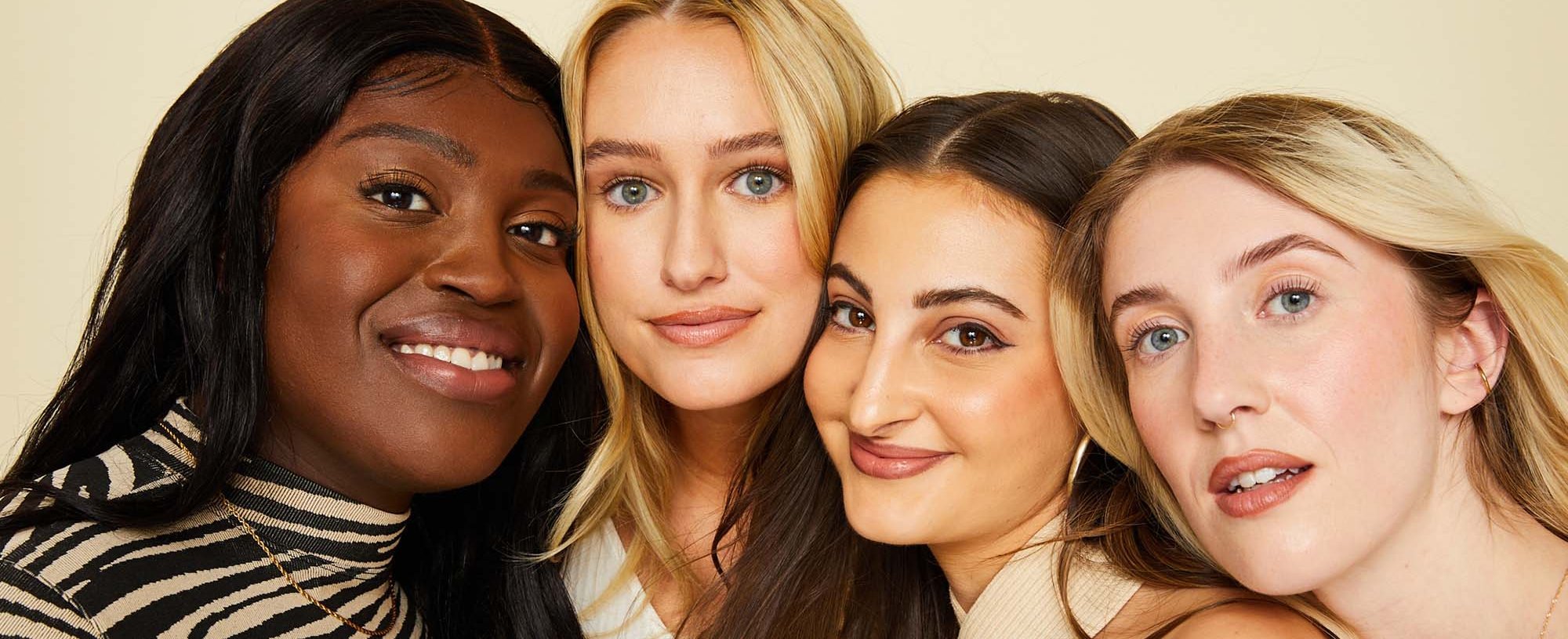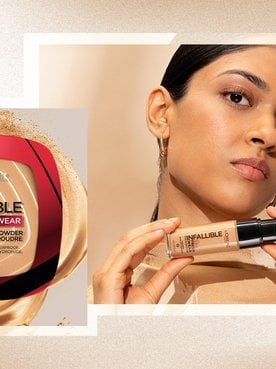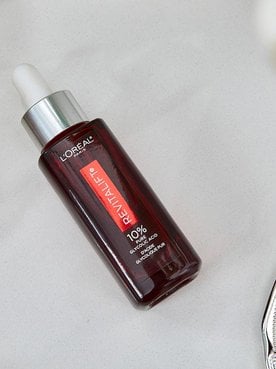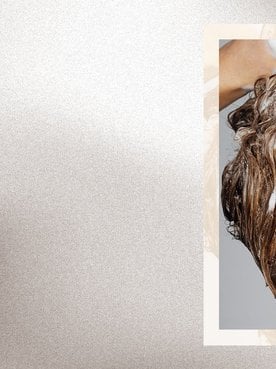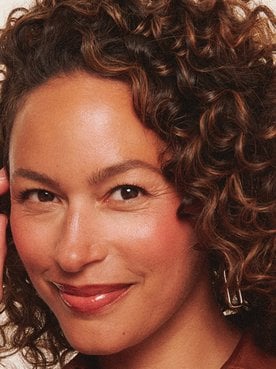Between the seemingly endless articles about sun care, ultraviolet rays and the best sunscreens is the topic of Fitzpatrick skin type. If you’re unfamiliar with the latter you’re not alone, but it’s an important skin tone classification that everyone should know. It’s an aspect of sun protection that can actually help you determine how to properly protect your skin and how much sunscreen you need. Spoiler Alert: All Fitzpatrick skin types need to use a broad-spectrum SPF and observe proper coverage habits to protect your skin from sun damage — like skin burning, sun spots and wrinkles. Here, learn about the six Fitzpatrick skin types and how you can determine yours (hint: you’ll need to use the Fitzpatrick scale) to better protect your skin.
What Is a Fitzpatrick Skin Type?
According to the National Center for Biotechnology Information (NCBI), the Fitzpatrick scale was first developed by American dermatologist Thomas B. Fitzpatrick in 1972 and today includes a total of six skin phototypes. The Fitzpatrick skin phototypes (types) were constructed based on an individual's skin color and tendency to burn or tan when exposed to sunlight. A lower Fitzpatrick skin type number corresponds to someone with lighter skin that more easily burns than it tans, and a higher Fitzpatrick skin type classification indicates darker skin that tans more than it burns.
While the classifications are understood to be subjective, the Fitzpatrick skin type scale has been proven valuable as a diagnostic evaluation tool for many situations, including predicting skin cancer risk and guiding sun protection advice, according to the NCBI. It also states that although the Fitzpatrick scale is widely used throughout different medical specialties, questions regarding the objective determination, accuracy of self-reporting, and effectiveness in darker skin tones are all major issues of concern with Fitzpatrick skin type classifications.
Historically, There has been a common misconception that those with darker skin tones cannot burn, therefore they can’t get skin cancer, reports the Skin of Color Society. However, the same report confirms that all skin types can burn (in some manner) and are at risk of sun damage.
How to Find Your Fitzpatrick Skin Type?
Now that you know a bit more about how the Fitzpatrick skin types came to be, you can figure out how to determine yours based on the test from Skin Cancer Foundation. The quiz asks questions about your physical appearance and your skin’s relationship with the sun to figure out how light or dark your complexion is — within the six different phototypes. Total up your points from the below eight questions to determine your Fitzpatrick skin type.
1. What Color Are Your Eyes?
Add 0 if your eyes are light blue, light gray, or light green.
Add 1 if your eyes are blue, gray, or green.
Add 2 if your eyes are hazel or light brown.
Add 3 if your eyes are dark brown.
Add 4 if your eyes are blackish brown.
2. What Is Your Natural Hair Color?
Add 0 if your natural hair color is red or light blonde.
Add 1 if your natural hair color is blonde.
Add 2 if your natural hair color is dark blonde or light brown.
Add 3 if your natural hair color is dark brown.
Add 4 if your natural hair color is black.
3. What Is Your Natural Skin Color (before sun exposure)?
Add 0 if your natural skin color is ivory white.
Add 1 if your natural skin color is fair or pale.
Add 2 if your natural skin color is fair to beige, with golden undertones.
Add 3 if your natural skin color is olive or light brown.
Add 4 if your natural skin color is dark brown.
4. How Many Freckles Do You Have On Unexposed Areas of Your Skin?
Add 0 if you have many.
Add 1 if you have several.
Add 2 if you have a few.
Add 3 if you have very few.
Add 4 if you have none.
5. How Does Your Skin Respond to the Sun?
Add 0 if your skin always burns, blisters, and peels.
Add 1 if your skin often burns, blisters, and peels.
Add 2 if your skin burns moderately.
Add 3 if your skin burns rarely, if at all.
Add 4 if your skin never burns.
6. Does Your Skin Tan?
Add 0 if your skin never tans—you always burn.
Add 1 if your skin seldom tans.
Add 2 if your skin sometimes tans.
Add 3 if your skin often tans.
Add 4 if your skin always tans.
7. How Deeply Do You Tan?
Add 0 if you don’t tan at all—or very little.
Add 1 if you lightly tan.
Add 2 if you moderately tan.
Add 3 if you deeply tan.
Add 4 if your skin is naturally dark.
8. How Sensitive Is Your Face to the Sun?
Add 0 if your face is very sensitive.
Add 1 if your face is sensitive.
Add 2 if your face is normal.
Add 3 if your face is resistant.
Add 4 if your face is very resistant and has never had a problem.
What Is Your Fitzpatrick Skin Type?
Now, add up your total points (everyone starts at 0) and check your score against the below classifications to figure out your Fitzpatrick skin type.
Fitzpatrick skin type 1: Your Total Score Is Between 0-6
Those who are Type 1 always get a sunburn, never tan and are extremely susceptible to skin damage as well as cancers, according to the Skin Cancer Foundation. The best way to help protect your skin is to use broad-spectrum sunscreen with an SPF of 30 or more, wear clothing with an ultraviolet protection factor (UPF) rating of 30 or more and seek shade whenever possible.
This skin type should also consider doing monthly skin checks as the lighter complexion is more prone to sun damage. Try L’Oréal Paris Bright Reveal Broad Spectrum SPF 50 Daily UV Lotion which quickly absorbs into the skin and protects against UVA and UVB rays that cause skin burning and signs of aging like wrinkles. Make sure you apply your SPF at least 15 minutes before exposure to the sun and re-apply every two hours (or more if you sweat often).
Fitzpatrick skin type 2: Your Total Score Is Between 7-12
You almost always burn and rarely tan, making you highly susceptible to skin damage and cancer, according to the Skin Cancer Foundation. To care for your skin, wear a broad-spectrum sunscreen with SPF 30 or more, clothing with a UPF rating of 30 or more, and seek shade whenever you can.
You’ll want to make sure your fair complexion gets the most sun protection as possible. In addition to the above advice, reach for an SPF 50 that protects skin from 98% of ultraviolet rays for the most protection possible, per the Skin Cancer Foundation.
Fitzpatrick skin type 3: Your Total Score Is Between 13-18
Burning and tanning is a toss-up for you, making you susceptible to sun damage, per the Skin Cancer Foundation. Take care of your skin by applying a broad-spectrum sunscreen with SPF 30 or greater daily every two hours for constant coverage. It’s also recommended to wear sun-protective clothing and seek shade when the sun is strongest. As with Type 1 and 2, you’ll want to check your skin head-to-toe monthly, the AAD also confirms.
Fitzpatrick skin type 4: Your Total Score Is Between 19-24
Type 4 Fitzpatrick skin types tan easily and are less likely to burn. Nonetheless, the Skin Cancer Foundation advises protecting yourself from the sun’s harmful UV rays. All skin types should wear SPF 30 or more daily confirms the AAD, as you can still get burned on cloudy days.
Apply at least an ounce of broad-spectrum sunscreen to your entire body (including your face), the AAD recommends. You should also seek shade when the sun is its strongest, as well as conduct monthly skin checks.
Fitzpatrick skin type 5: Your Total Score Is Between 25-30
This skin type easily tans and rarely burns but, as with the other Fitzpatrick skin types, can still be at risk of sun damage and skin cancer. In “Cutaneous Melanoma: Etiology and Therapy”, type 5 Fitzpatrick skin types are classified as tend to appear medium brown to dark brown in appearance.
Finish your daily morning skin care routine with SPF 30 or greater, and protect any exposed skin by covering it with protective clothing. And if you’re having trouble picking up the habit of wearing sunscreen every day, try switching to a moisturizer with SPF. For the face, try L’Oréal Paris Revitalift Triple Power Day Lotion SPF 30. This face cream has the sun protection abilities of a sunscreen, and has firming, brightening and wrinkle-reducing properties thanks to pro-retinol, vitamin C and hyaluronic acid in the formula.
Fitzpatrick skin type 6: Your Total Score Is Between 31+
This is the darkest of the skin tones on the Fitzpatrick scale. While your skin may not burn, it’s still important to take sun safety measures. Per the Skin Cancer Foundation’s recommendation, wear a broad-spectrum sunscreen with SPF 30 or greater for extended outdoor activity, seek shade between 10 a.m. and 4 p.m. when the sun is the strongest, and check your skin from head to toe each month.
Restating what has already been said multiple times, regardless of your Fitzpatrick skin type, everyone should wear broad-spectrum sunscreen daily (year-round, not just in the summer) because everyone is susceptible to the sun’s damaging UV rays. While risk factors may vary depending on where you fall on the Fitzpatrick scale, you must take measures to help protect your skin from harmful ultraviolet radiation no matter what.
Next: 5 Ways to Get Glowing, Bronzed Skin Without the Sun
Photo Credit: Chaunte Vaughn
